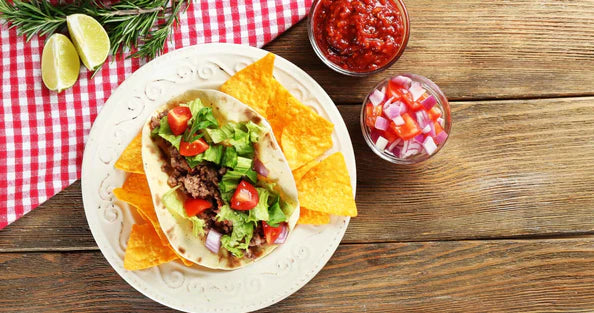
Food Safe Fabrics Part 1: The Real Deal
In this time where we all see a shift towards natural products to ensure safety on all counts there is an ever-increasing need for awareness regarding safety of products containing any chemicals–because a lot of misinformation abounds. Companies and, subsequently, people selling those companies’ products are using wrong information to claim safety. Or, even worse, half the real information! Here we bring you some valuable knowledge regarding food-safe fabrics which may help you ask the right questions the next time you’re in the market for such products.
Now, in USA, the United States Food and Drug Administration regulates all aspects of food preparation, processing, packaging, labeling, storage. These regulations are laid out in Title 21 of the Code of Federal Regulations. That means the packaging materials used for all the packaged consumer goods that we see on the grocery shelves have to meet the conditions determined by the FDA, and so must disposable snack bags, cling wrap, plastic containers, spoons, forks, paper plates, foam glasses etc.
While homemade snack bags do not come under this purview, if you do want to make safe snack bags it makes great sense to use materials that are approved for use, which pass the requirements laid forth in these regulations.
The aforementioned Title 21 of the Code of Federal Regulations (21 CFR) is devoted to all the regulations that apply to food and drugs for: the FDA, the DEA (Drug Enforcement Administration), and the ONDCP (Office of National Drug Control Policy). If you check out the link, you will see that it consists of three chapters with one chapter for each of the above agencies. Chapter 1 is what we are concerned with, for it describes most of the regulations related to the Federal Food, Drug and Cosmetic Act.

This single chapter consists of more than 1000 parts and each part has sections and sub-sections. Parts 100 to 199, in particular, are related to different aspects of all types of food processing, packaging, labeling, food additives – direct and indirect, items prohibited in food etc. In short, the very information we seek regarding safety of food.
You will notice that one of the sections in Chapter 1 is the GRAS list (21 CFR Chapter 1 Part 182). This is the list which is often referenced by many companies and websites to “prove” their material is food safe. You probably know that “GRAS” is an acronym for Generally Recognized As Safe under sections 201(s) and 409 of the Federal Food, Drug, and Cosmetic Act (the Act). It is a listing of food substances that “may be GRAS either through scientific procedures or, for a substance used in food before 1958, through experience based on common use in food.” [There is a GRAS notification program that provides a platform for people to apply for new materials to be recognized as safe by sending food safety data to the FDA.]
Unfortunately for us, the GRAS list is not an all-encompassing list. More specifically, it does not have the materials that are of interest to us i.e. the different types of fabrics/textiles!
However, parts 170 – 199 of Chapter 1 contain lists of materials that are considered as safe for use along with the conditions they need to meet to be accepted as safe. We did the tedious work of reviewing these parts in detail and so we were able to identify the types of fabrics/textiles that are safe for use with food and the requirements they need to fulfill.
Just as we thought, rip-stop nylon and oil cloth were not mentioned. Neither was lead, BPA, and phthalate free PUL. Even when the fabric/material was present in an approved list, there were other requirements that needed to be met!
>This means that it is important for you to know how the fabric was made. E.g. cotton fabric is considered safe for use with dry food but only if it is made with the use of approved adjuvants, and if any materials that are used during its manufacture are also approved as safe for use. As you can see, this calls into question any fabrics for which you do not know the manufacturing process, especially if you don’t know where they are made and, of course, if you have no control over the manufacturing.
The materials that are used in making the fabrics are as important as method of manufacture. You see, carcinogenic and toxic chemicals used during manufacture could remain in the fabric and leach out little by little. One would think that they’d all get washed out in a hot wash—but that is not always the case.
Certain chemicals are not dissolved or removed using water and soap, but could be leached with oils in food. The finishing oils, dyes used for coloring, printing could have toxic components that are not easily removed. (You must know that the solvent laminated PUL in the market used MEK or TCE – a carcinogenic compound during manufacture and caused several problems.)
Most companies supplying fabrics do not have an in-depth knowledge of these regulations. Navigating your way through the 1299 parts, and sections and lists those parts contain, to extract the relevant information is not an easy task but, having invaluable knowledgeable people on our team with decades of experience with FDA rules and regulations, we knew how to patiently make our way through them to compile the information that was relevant to us and to you.
